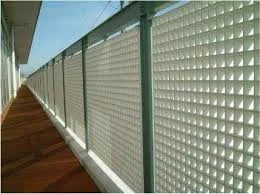
-
 Afrikaans
Afrikaans -
 Albanian
Albanian -
 Amharic
Amharic -
 Arabic
Arabic -
 Armenian
Armenian -
 Azerbaijani
Azerbaijani -
 Basque
Basque -
 Belarusian
Belarusian -
 Bengali
Bengali -
 Bosnian
Bosnian -
 Bulgarian
Bulgarian -
 Catalan
Catalan -
 Cebuano
Cebuano -
 China
China -
 China (Taiwan)
China (Taiwan) -
 Corsican
Corsican -
 Croatian
Croatian -
 Czech
Czech -
 Danish
Danish -
 Dutch
Dutch -
 English
English -
 Esperanto
Esperanto -
 Estonian
Estonian -
 Finnish
Finnish -
 French
French -
 Frisian
Frisian -
 Galician
Galician -
 Georgian
Georgian -
 German
German -
 Greek
Greek -
 Gujarati
Gujarati -
 Haitian Creole
Haitian Creole -
 hausa
hausa -
 hawaiian
hawaiian -
 Hebrew
Hebrew -
 Hindi
Hindi -
 Miao
Miao -
 Hungarian
Hungarian -
 Icelandic
Icelandic -
 igbo
igbo -
 Indonesian
Indonesian -
 irish
irish -
 Italian
Italian -
 Japanese
Japanese -
 Javanese
Javanese -
 Kannada
Kannada -
 kazakh
kazakh -
 Khmer
Khmer -
 Rwandese
Rwandese -
 Korean
Korean -
 Kurdish
Kurdish -
 Kyrgyz
Kyrgyz -
 Lao
Lao -
 Latin
Latin -
 Latvian
Latvian -
 Lithuanian
Lithuanian -
 Luxembourgish
Luxembourgish -
 Macedonian
Macedonian -
 Malgashi
Malgashi -
 Malay
Malay -
 Malayalam
Malayalam -
 Maltese
Maltese -
 Maori
Maori -
 Marathi
Marathi -
 Mongolian
Mongolian -
 Myanmar
Myanmar -
 Nepali
Nepali -
 Norwegian
Norwegian -
 Norwegian
Norwegian -
 Occitan
Occitan -
 Pashto
Pashto -
 Persian
Persian -
 Polish
Polish -
 Portuguese
Portuguese -
 Punjabi
Punjabi -
 Romanian
Romanian -
 Russian
Russian -
 Samoan
Samoan -
 Scottish Gaelic
Scottish Gaelic -
 Serbian
Serbian -
 Sesotho
Sesotho -
 Shona
Shona -
 Sindhi
Sindhi -
 Sinhala
Sinhala -
 Slovak
Slovak -
 Slovenian
Slovenian -
 Somali
Somali -
 Spanish
Spanish -
 Sundanese
Sundanese -
 Swahili
Swahili -
 Swedish
Swedish -
 Tagalog
Tagalog -
 Tajik
Tajik -
 Tamil
Tamil -
 Tatar
Tatar -
 Telugu
Telugu -
 Thai
Thai -
 Turkish
Turkish -
 Turkmen
Turkmen -
 Ukrainian
Ukrainian -
 Urdu
Urdu -
 Uighur
Uighur -
 Uzbek
Uzbek -
 Vietnamese
Vietnamese -
 Welsh
Welsh -
 Bantu
Bantu -
 Yiddish
Yiddish -
 Yoruba
Yoruba -
 Zulu
Zulu
Innovative Lightweight Vehicles Made from Fiberglass Materials for Enhanced Performance and Durability
The Rise of Fiberglass Cars Innovation in Automotive Design
Fiberglass, a composite material known for its lightweight and strong properties, has revolutionized various industries, most notably aviation, construction, and of course, automotive design. The advent of fiberglass in the 1950s paved the way for a new era in car manufacturing, allowing designers and engineers to explore creative possibilities that were once limited by traditional metal structures.
One of the most significant advantages of fiberglass is its weight-to-strength ratio. When compared to steel, fiberglass is significantly lighter, which enhances a vehicle's performance by improving fuel efficiency and handling. This became particularly appealing during the oil crises of the 1970s when consumers sought more economical vehicles. Manufacturers quickly realized that crafting car bodies from fiberglass not only helped in reducing weight but also enabled greater design flexibility. The ability to mold fiberglass into complex shapes meant that car makers could create unique body styles, leading to the birth of a slew of iconic designs.
One of the first notable fiberglass cars was the Chevrolet Corvette, introduced in 1953. The Corvette showcased the aesthetic and performance potential of fiberglass, quickly gaining popularity among car enthusiasts. Its curvaceous body and lightweight construction allowed it to dominate in sports car racing, setting the standard for future fiberglass designs. Following in its footsteps, models like the Lotus Elan and the Ford GT40 further cemented fiberglass as a viable option in high-performance vehicles.
fiberglass car

However, the advantages of fiberglass go beyond just performance and aesthetics. The material's resistance to corrosion and ease of repair have made it an appealing choice for many manufacturers. Unlike metal, fiberglass does not rust, which translates to lower long-term maintenance costs. This durability has ensured that many classic fiberglass cars retain their value even decades after their initial production.
Despite its many benefits, fiberglass is not without challenges. Initially, the manufacturing process of fiberglass car bodies was labor-intensive and required skilled craftsmanship. This often led to higher production costs compared to mass-produced metal counterparts. Over the years, advancements in technology and manufacturing techniques have streamlined the production of fiberglass vehicles, making them more accessible to a broader market.
As the automotive industry evolves, fiberglass continues to be a relevant material, especially with the growing emphasis on sustainability. Many modern manufacturers are exploring eco-friendly fiberglass composites made from recycled materials, demonstrating a commitment to both innovation and environmental responsibility. Electric vehicle (EV) manufacturers have also begun to adopt fiberglass for its lightweight properties, which contribute to greater energy efficiency in EVs.
In conclusion, the journey of fiberglass in the automotive industry is a testament to how innovative materials can reshape traditional practices. From the iconic Corvette to today’s sustainable electric vehicles, fiberglass has proven to be a versatile and valuable material in car manufacturing. As technology continues to advance, the future of fiberglass cars looks promising, paving the way for even more groundbreaking designs and innovations that can redefine the concept of mobility. Whether you are a car enthusiast or simply someone in search of efficient transport, the legacy of fiberglass cars remains a pivotal chapter in the history of automotive design.









